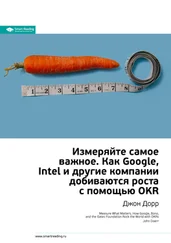Nowell, L. 2009. Interview with author, January 12.
Bryman, A. 1997. Animating the pioneer versus late entrant debate: An historical case study. Journal of Management Studies 34, 3, 415–438.
Porter, M. E. 1996. What is strategy? Harvard Business Review, 74, November — December, 61–78.
Drucker, P. F. 2001. The essential Drucker. New York: Harper Business.
Bessen, J., and Meurer, M. J. 2008. Patent failures: How judges, lawyers and bureaucrats put innovators at risk/ Princeton, NJ: Princeton University Press; Bessen, J., and Meurer, M. J. 2008. Do patents perform like property? Academy of Management Perspectives 22, 3, 8–20; see also Ziedonis, R. H. 2008. On the apparent failure of patents: A response to Bessen and Meurer. Academy of Management Perspectives 22, 4, 21–29.
Kohrt, C. 2008. Interview with author, March 5.
Halbrooks, J. R. 1996. How to really deliver superior customer service, cited in Rivkin, J. W., and Porter, M. E. 1999. Matching Dell. Case 9-799-158. Boston: Harvard Business School, June 6.
Iyer, В., and Davenport, Т. H. 2008. Reverse engineering Google’s innovation machine. Harvard Business Review, April, 58–68.
Zeng, M., and Williamson, P. J. 2007. Dragons at your door: How Chinese companies will disrupt global competition. Boston: Harvard Business School Press.
Bryant, A. 1995. Continental is dropping «Lite» service. New York Times, April 14; Graf, L. 2005. Incompatibilities of the low-cost and network carrier business models within the same airline grouping. Journal of Air Transport Management 11, 313–327.
The new champions. 2008. Economist: Special Reports, September 18, 8.
Ortega, B. 1998. In Sam we trust. New York: Times Business/Random House.
Chew, W. В., Bresnahan, Т. F., and Clark, К. B. 1990. Measurement, coordination and learning in a multi-plant network. In Measures for manufacturing excellence, ed. R. S. Kaplan. Boston: Harvard Business School Press.
Fischer, A. 2008. Interview with author, March 24.
Kohrt, Interview with author.
Westney, D. E. 1987. Imitation and innovation: The transfer of Western organizational practices to Meiji Japan. Cambridge: Harvard University Press.
Levitt, Innovation and imitation.
Aaker, D. A., and Day, G. S. The perils of high growth markets. Strategic Management Journal, 5, 409–421; Levitt, T. 1966. The management of reverse R&D or how to imitate your competitor’s products before it’s too late. Harvard Business Review, September — October, 33–37; Hannan, M. T., and Carroll, G. R. 1992. Dynamics of organizational populations. New York: Oxford University Press; Stinchcombe, A. L. 1965. Organizations and social structure. In Handbook of organizations, ed. J. G. March. Chicago: Rand McNally, 151–193; Freeman, J., Carroll, G. R., and Hannan, M. T. 1983. The liability of newness: Age dependence in organizational death rates. American Sociological Review 48, 692–710; Urban, G. L., Carter, T., Gasin, S., and Mucha, S. 1986. Market share rewards to pioneering brands: An empirical analysis and strategic implications. Management Science 32, 645–659.
Daley, C. 2008. Interview with author, November 18.
Schmalensee, R. 1978. Entry deterrence in the ready-to-eat breakfast cereal industry. Bell Journal of Economics 9, 305–327. Cited in Robinson, W. T., Fornell, C, and Sullivan, M. 1992. Are market pioneers intrinsically stronger than later entrants? Strategic Management Journal 13, 609–624.
Robinson, Fornell, and Sullivan. 1992. Are market pioneers intrinsically stronger than later entrants?; Robinson, W. Т., and Chiang, J. 2002. Product development strategies for established market pioneers, early followers, and late entrants. Strategic Management Journal 23, 855–866; Zeng and Williamson, Dragons at your door: How Chinese companies will disrupt global competition; Cho, D. S., Kim, D. J., and Dong, K. R. 1998. Latecomer strategies: Evidence from the semiconductor industry in Japan and Korea. Organization Science 9, 4, 489–505.
Bayus, В. L., Jain, S., and Rao, A. G. 1997. Too little, too early: Introduction timing and new product performance in the Personal Digital Assistant industry. Journal of Marketing Research 34, 50–63.
Murthi, B. P. S., Shrinivasan, K., and Kalyanaram, G. 1996. Controlling for observed and unobserved managerial skills in determining first-mover market share advantages. Journal of Marketing 33, 329–336; Suarez, F., and Lanzolla, G. 2007. The role of environmental dynamics in building a first mover advantage theory. Academy of Management Review 32, 2, 377–392; Min, S., Kalwani, M. U., and Robinson, W. T. 2006. Market pioneer and early follower survival risks: a contingency analysis of really new versus incrementally new product markets. Journal of Marketing 70, 15–33.
Gittell, J. H. 2003. The Southwest Airlines way. New York: McGraw-Hill.
Murthi, Shrinivasan, and Kalyanaram. Controlling for observed and unobserved managerial skills in determining first-mover market share advantages; Suarez and Lanzolla. The role of environmental dynamics in building a first mover advantage theory; Min, Kalwani, and Robinson. Market pioneer and early follower survival risks; Teece, D. 1986. Profiting from technological innovation: Implications for integration, collaboration, licensing and public policy. Research Policy 15, 285–305; Cho, Kim, and Rhee, Latecomer strategies: Evidence from the semiconductor industry in Japan and Korea; Bayus, B. L. An analysis of product lifetimes in a technologically dynamic industry. Management Science 44, 6 (June), 763–775; Ortega, In Sam we trust; Schmalensee, R. 1982. Product differentiation advantages of pioneering brands. American Economic Review 72, 3, 349–365.
Bandura, A. 1977. Social learning theory. Englewood Cliffs, NJ: Prentice-Hall; Bandura, A. 1965. Influence of model’s enforcement contingencies on the acquisition of imitative responses. Journal of Personality and Social Psychology 1, 589–595; Masia, C. A., and Chase, P. N. 1997. Vicarious learning revisited: A contemporary behavior analytic interpretation. Journal of Behavioral Theory and Experimental Psychiatry 28, 1, 41–51; see also Yando, R., Seitz, V, and Zigler, E. Imitation: A developmental perspective. Hillsdale, NJ: Lawrence Elbaum.
Bryman, Animating the pioneer versus late entrant debate: An historical case study.
Mueller, D. C. 1997. First-mover advantages and path dependence. International Journal of Industrial Organization 15, 827–850.
Читать дальше
Конец ознакомительного отрывка
Купить книгу












